Just released...2019 Lubec photo workshops summer dates below
ALSO: Join me in Umbria in October, 2019 (below)
The Bronx is up...
And so is Gare du Nord
By Frank Van Riper
Photography Columnist
Following is an excerpt from my new book, Recovered Memory: New York & Paris 1960-1980 (Daylight Books, $45.) For signed, inscribed copies, contact me directly: GVR@GVRphoto.com. Text and photographs © Frank Van Riper. All Rights Reserved.
SEE BELOW FOR BOOK-SIGNING DATES AND VENUES
SUBWAY...
To ride the D train back then all you needed was 15 cents and a tolerance for noise.
The D train (starting in the north Bronx and ending at Coney Island in Brooklyn) was just one of many New York City subway routes. The A train was probably best known, thanks to Billy Strayhorn’s jazz standard “Take the A Train,” that Duke Ellington made the signature tune for his orchestra in the 1940s.
But those were just two of more than two dozen subway routes crisscrossing the five boroughs in such a remarkable grid pattern that anyone could get anywhere in the city--save perhaps for the outer reaches of Red Hook in Brooklyn or West Farms Square in the Bronx—for the same lousy 15 cents.
As it happens, both the New York and Paris subways are about the same age. New York’s, the largest rapid transit system in the world in terms of stations—roughly 472—dates back to 1904. The Paris Metro (short for Metropolitain) began operation four years earlier, in 1900, and today is the second busiest subway system in Europe, after the Moscow Metro. Still, Paris’ number of in-city stations (245) is dwarfed by New York’s. (nb: the term “Metro” now has become a default name for virtually all modern subway systems, from Toronto to Washington, DC .
But the oldest subway in America—Boston’s—simply is referred to as “the T,” for Metropolitan Transit Authority. )
Fifteen cents a ride was the fare I knew best when I lived in the Bronx. The basic NYC subway fare was 15 cents from 1953 to 1966 (today it’s $2.75)—the longest time without a fare hike since the subway first opened. If you were lucky and it wasn’t rush hour, your 15 cents let you sit on woven straw seats or, failing that, hang onto spring-loaded steel handles that hung from the ceiling , or failing even that, grab on to a floor-to-ceiling pole, one of many that punctuated every subway car.
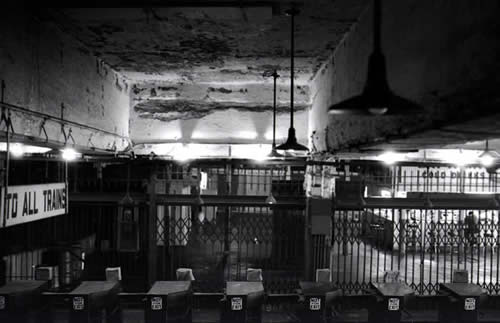 |
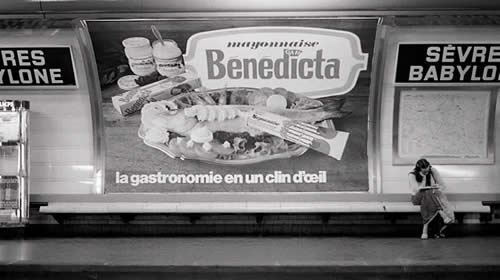 |
| Above: It wasn't much for looks, but it got you there. Subway entrance in the Bronx, ca 1960s. Below: Paris Metro somehow seemed more human scale, especially in older stations with their curved walls. All images © Frank Van Riper. All Rights Reserved. |
In postwar New York and into the mid 60s, the New York subway was a fast, convenient way to get from point A to point B, even if it was layered in grime. And you traveled in relative safety.
The Paris Metro of the 1980s was an odd mix of the old and new. The most obvious retro nonpareils were the Hector Guimard-designed Art Nouveau subway entrances—simply glorious evocations of the natural world writ large in steel and glass. (One such relic now graces the courtyard of the Museum of Modern Art in New York.) Descend into the Louvre station, or Gare du Nord, or Sevres-Babylone or anywhere on the system and you could see gleaming steel subway cars juxtaposed with dingier ones that seemed to come from New York, or even the previous century. The older ones did have more elan—especially the ones on rubber tires. More important, none of the cars was marred by the graffiti that for a while became the signature look of underground New York.
The Paris system also was built on a smaller scale, in that many stations--with their severely curved walls--somehow seemed more intimate. Maybe it was the hugeness of the posters that made one feel small. I recall a gargantuan poached trout on a poster maybe ten-feet wide that promoted Benedicta mayonnaise. Too, in that largely pre-computer/pre-digital era, what passed for high-tech direction-finding were large station-mounted electronic maps on which scores of tiny individual light bulbs lined each in-town route.
Confused about how to get somewhere? Simply push the button for point A with one finger, point B with the other. Et voila!—scores of little bulbs would light up the most direct route for you. I always thought of pinball machines when I did this.
From the 1920s to the 70s another, though little-lamented, feature of Paris stations were portillons automatiques: automatic crowd control gates that closed off the platform when trains were in the station, to keep crowds manageable and safe, especially during rush hour. Fine, except if you were racing to make a train and were blocked out. In that case, it was maddening. Most were dismantled by the mid to late 70s.
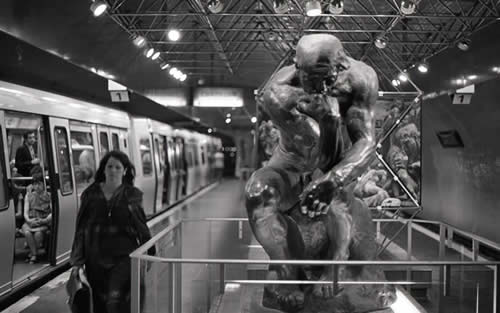 |
| Don't try this in New York. Woman passenger strides by a copy of Rodin's famous 'Le Penseur,' one of several Rodin works displayed in the famed Paris Metro 40 years ago. |
In post World War 2 New York, there was no such thing as air conditioning in the subway—this was the era when people would sleep on their fire escapes in the summer or go to the movies just to get cool. So in the steaming summertime subway, huge fans tried without success to move the air, several mounted on the ceiling of every car, just a foot or so above your head. The fans’ wide metal blades moved as fast as airplane propellers and, in the older cars, were just as unprotected. Nobody messed with them.
Newspaper stands, once the lifeblood of sidewalk life in any big city, proliferated underground in New York as well. Run by the Union News Company, these stands dotted the bigger stations and were every bit as full as their aboveground counterparts, hawking papers, magazines, cigarettes, candy and gum. Vending machines also could be seen on many stations’ steel columns, though I swear I never saw anyone use them.
That all changed, beginning in the late 60s.
During that time, the New York subway underwent a terrible metamorphasis. Blame it on urban decay, social upheaval, lax policing, the political ineptness of two-term mayor John V. Lindsay. Whatever the cause, the proud NYC subway became, in the words of Magnum photographer Bruce Davidson, a place of “grim, abusive, and violent reality.”
It looked awful—like the bowels of hell. Every interior inch of almost every subway car, especially the newer ones with shinier surfaces, was covered with hideous, crudely scrawled graffiti—don’t even try to call it artistic expression. Train exteriors, too, often bore the mark of vandals who roamed the subway yards at night.
Thugs preyed on passengers—to the extent that undercover cops had to prowl high-crime stations—and a private group of scowling protectors, dubbed The Guardian Angels, took to patrolling subway cars in white T-shirts and red berets.
By contrast, Parisian subways were fairly tranquil, though in the 80’s there was talk that subway crime there had “quadrupled.” But even then, the crime rate was one-eighth of what it was in New York.
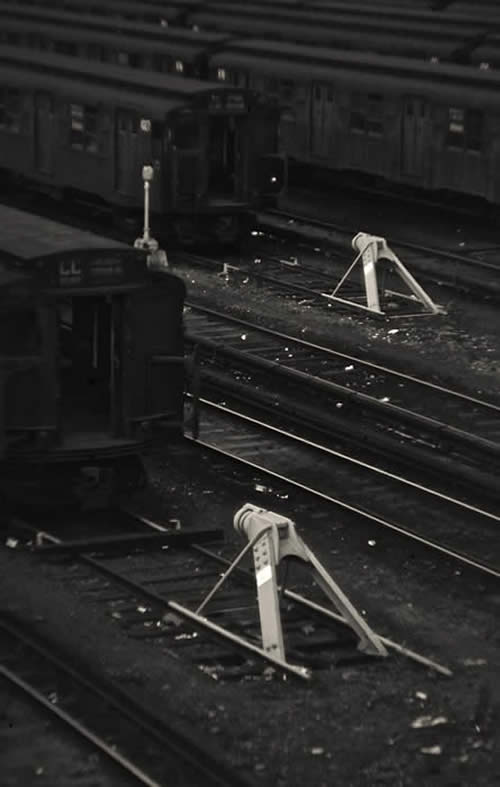 |
| Bronx subway yard, ca 1960. These stolid grey cars were part of the IND subway line--the line that I more or less lived on during my formative (and car-less) years in the Bronx. |
[It should be noted, though that, safe and elegant though the Paris subway was in the central city, stations in the outer arrondissements, where the poor immigrants lived, were far rougher, suffering the presence of beggars, pickpockets and graffiti.]
And, noted onetime ex-pats Neil and Carol Offen, “we remember so many times, getting off the metro at a big station, say Concorde, walking up the steps and seeing obvious-looking immigrants -- Arabs or black Africans -- being asked for their papers, to check their identities. In all the years we lived in Paris, we were never checked. But we were white.”]
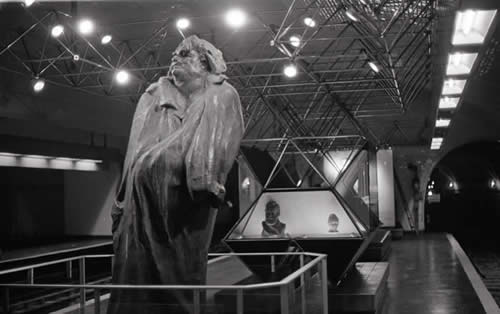
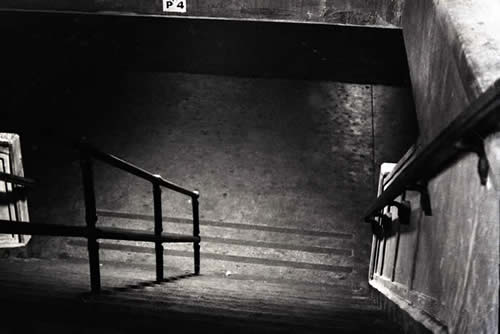
|
| Above: Another Rodin classic--his heroic statue of author Honore de Balzac in the Paris Metro. Below: somewhat less elegant, a subway entrance in New York in the 1960s. |
Subway violence in New York became the fare of TV and movies. I remember as a cub reporter on the Daily News in the late 60s, covering the making of a movie called ‘The Incident,’ about two young toughs terrorizing an IRT subway car full of passengers. The film was not shot on location, but in the old Biograph Studios in the Bronx. There a full-size, largely wooden, replica of an IRT subway car dominated the soundstage—its rumbling movement achieved by stagehands alternately moving huge wooden beams levered under the car out of camera range. The two young toughs in the film were played by then-unknown actors Tony Musante and Martin Sheen.
Perhaps the best-known subway movie of the era was the 1974 film “The Taking of Pelham 123,” after the novel of the same name by Milton Freedgood (writing under the name John Godey) about a gang of men who take late-night subway passengers hostage for a million-dollar ransom. The bad guys lose, to a wonderfully laconic transit police lieutenant, played by Walter Matthau, but not before we hear one of the best cynical New Yorker lines ever uttered in a movie. (n.b: by this time the subway fare had risen.)
Amid the agonizingly tense negotiations between the hijackers and the transit police, a frazzled dispatcher shouts: “Screw the goddam passengers! What the hell did they expect for their 35 cents—to live forever?!”
-0-0-0-0-
'Recovered Memory' launch events:
--Saturday afternoon, Nov. 10th, 1pm, Politics & Prose, Conn. Ave. NW, Washington, DC
--Saturday, Nov. 17th, 4-5 pm, Albertine Booksore, 972 5th Avenue, Manhattan
--Friday evening, Dec. 14, 6-8pm, opening reception: solo exhibition and signing, Photoworks Gallery, Glen Echo Park, Glen Echo, Md.
Lubec Photo Workshops at SummerKeys, Lubec, Maine -- Summer, 2019
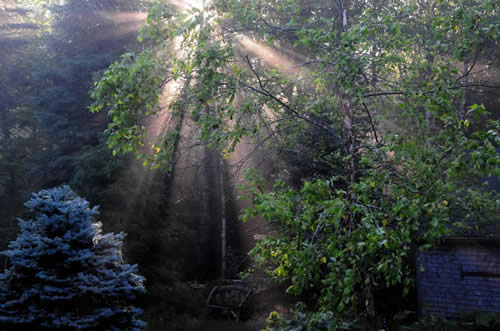
Daunted by Rockport??
Spend a week of hands-on learning and location photography with award-winning husband and wife photographer-authors Frank Van Riper and Judith Goodman. Frank and Judy will cover portraiture, landscape and documentary photography during morning instruction, followed by assignments in multiple locations including Quoddy Head State Park, Campobello Island, NB and the colorful town of Lubec itself. Daily critiques and one-on-one instruction. NO entrance requirement. Minimum age for attendance is 16. Maximum number of students each week is nine. Students supply their own digital camera.
The Lubec Photo Workshops debuted in 2009 and were a huge success for their low-key, no-pressure atmosphere. Note: Classes fill early.
2019 workshop dates: July 15-19; July 29-August 2
Tuition payable through the SummerKeys Music Workshops: www.SummerKeys.com
Or contact us: GVR@GVRphoto.com
NEW: Master Photo Classes with Frank Van Riper
These intense, three-day, limited enrollment classes are aimed at the more advanced student, who already has taken a photo workshop and who is familiar with basic flash. With a maximum enrollment of just five, these classes are nearly half the size of our regular workshops. NB: last summer's Master Classes were fully booked almost immediately.
2019 Master Photo Class dates:July 22-24; August 5-7
Come photograph in one of the most beautiful spots on earth!
-0-0-0-0-0-
JOIN ME FOR THE 2019 UMBRIA PHOTO WORKSHOP, October 12-18, 2019
This popular workshop always fills. Maximum number of students is seven. Anyone interested should contact me immediately: GVR@GVRphoto.com
More details here:
http://gvrphoto.com/wp/?page_id=82
-----------
Van Riper Named to Communications Hall of Fame
 |
| Frank Van Riper addresses CCNY Communications Alumni at National Arts Club in Manhattan after induction into Communications Alumni Hall of Fame, May 2011. (c) Judith Goodman |
[Copyright Frank Van Riper. All Rights Reserved. Published 11/18]
|